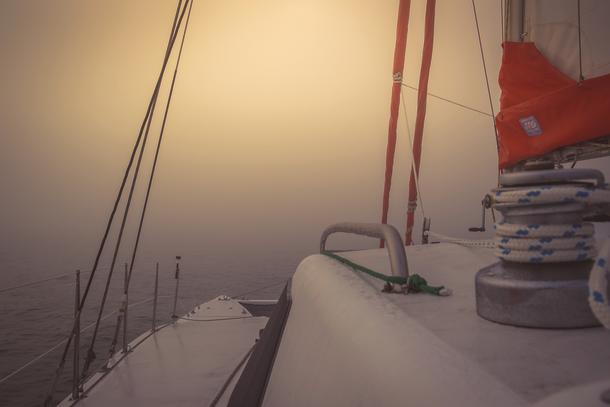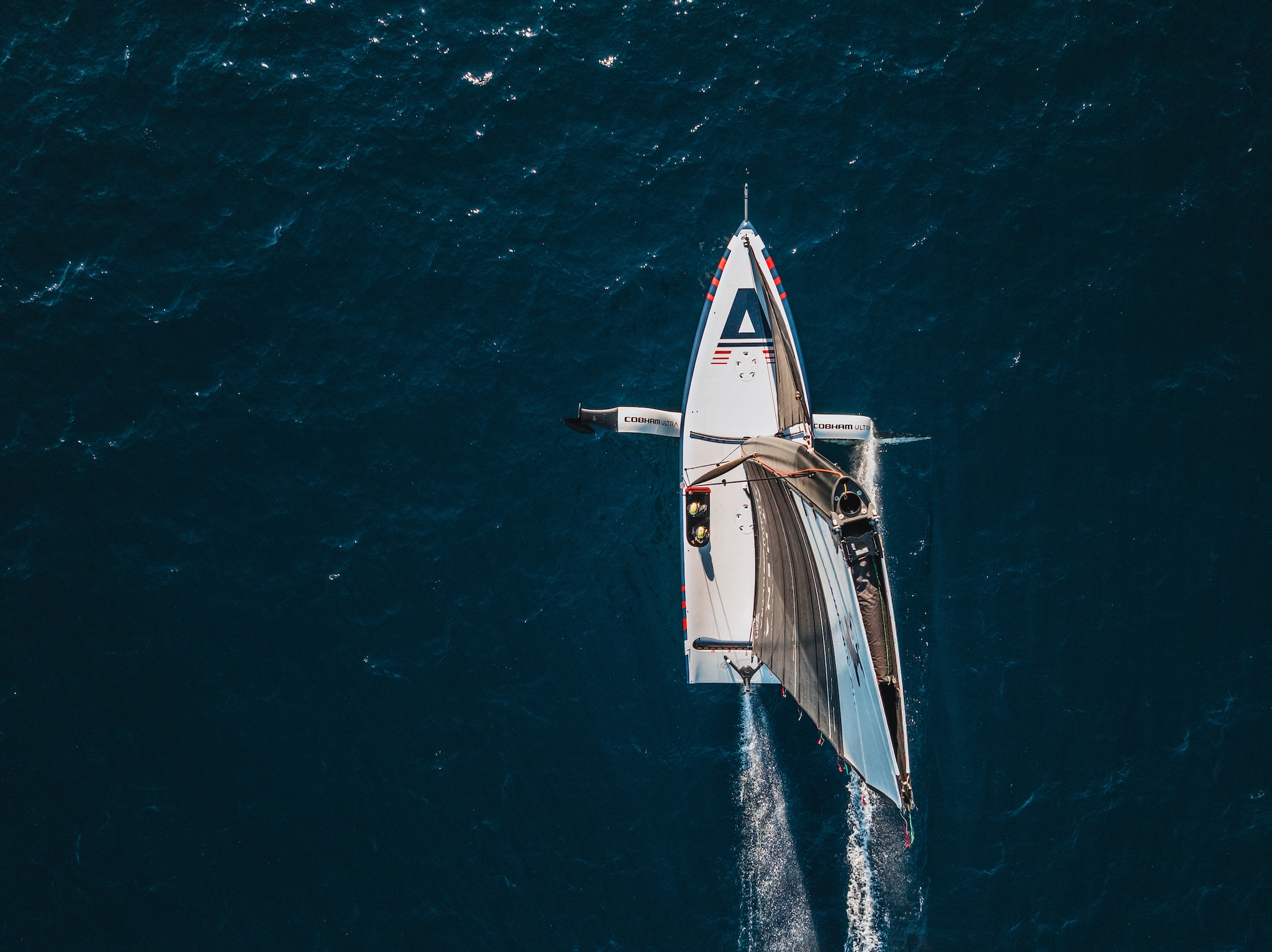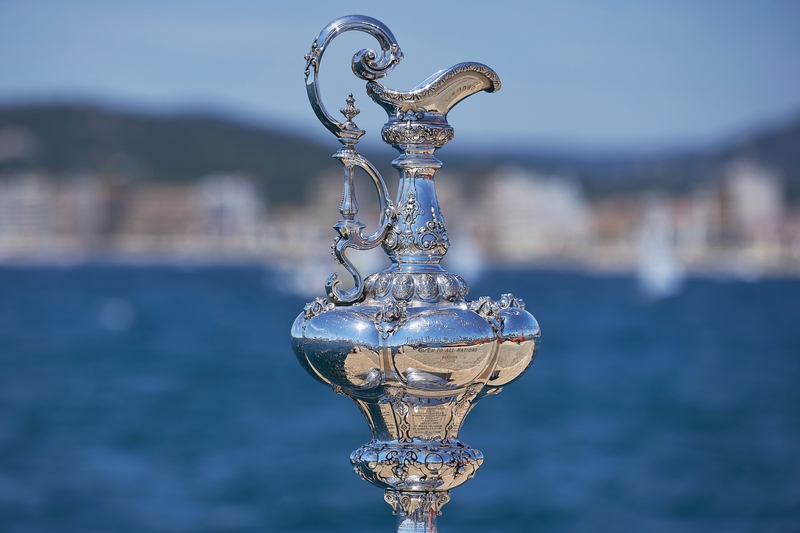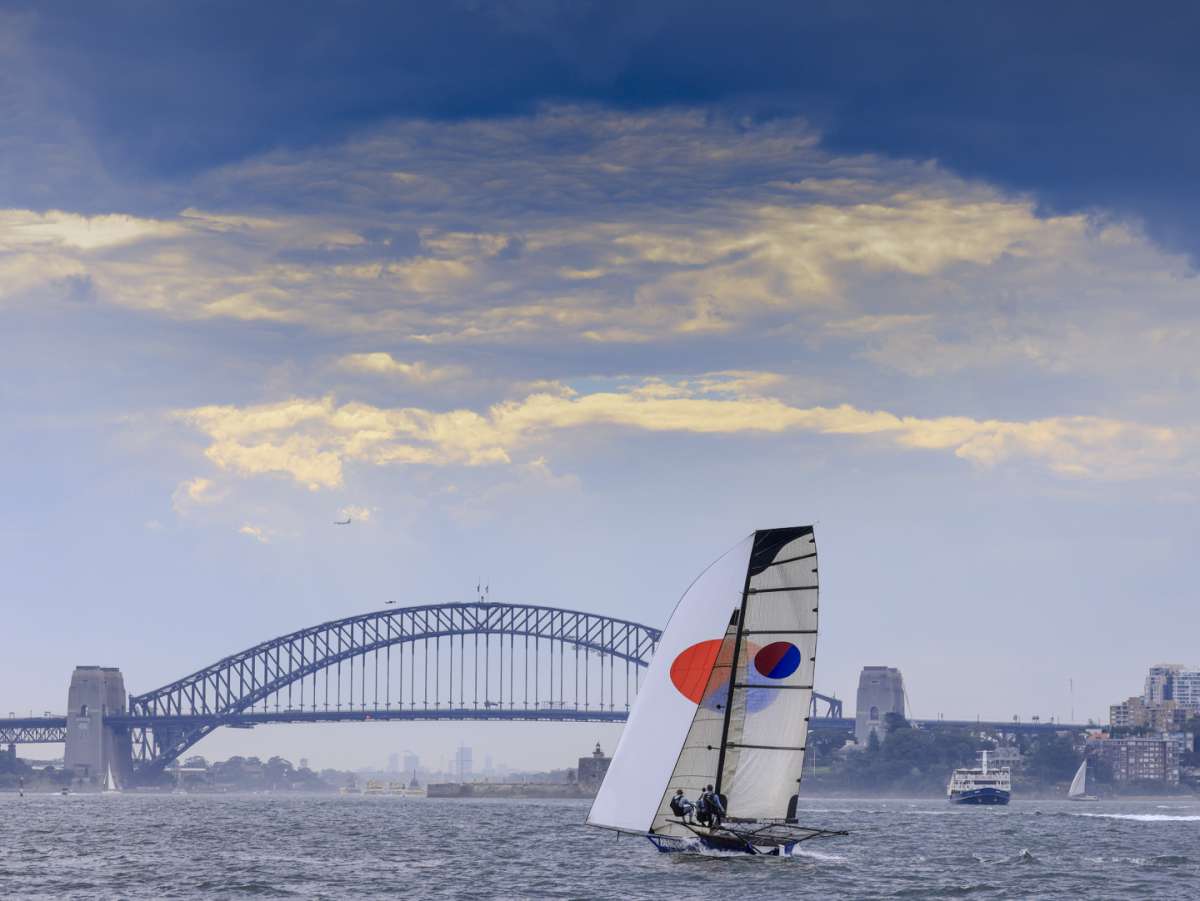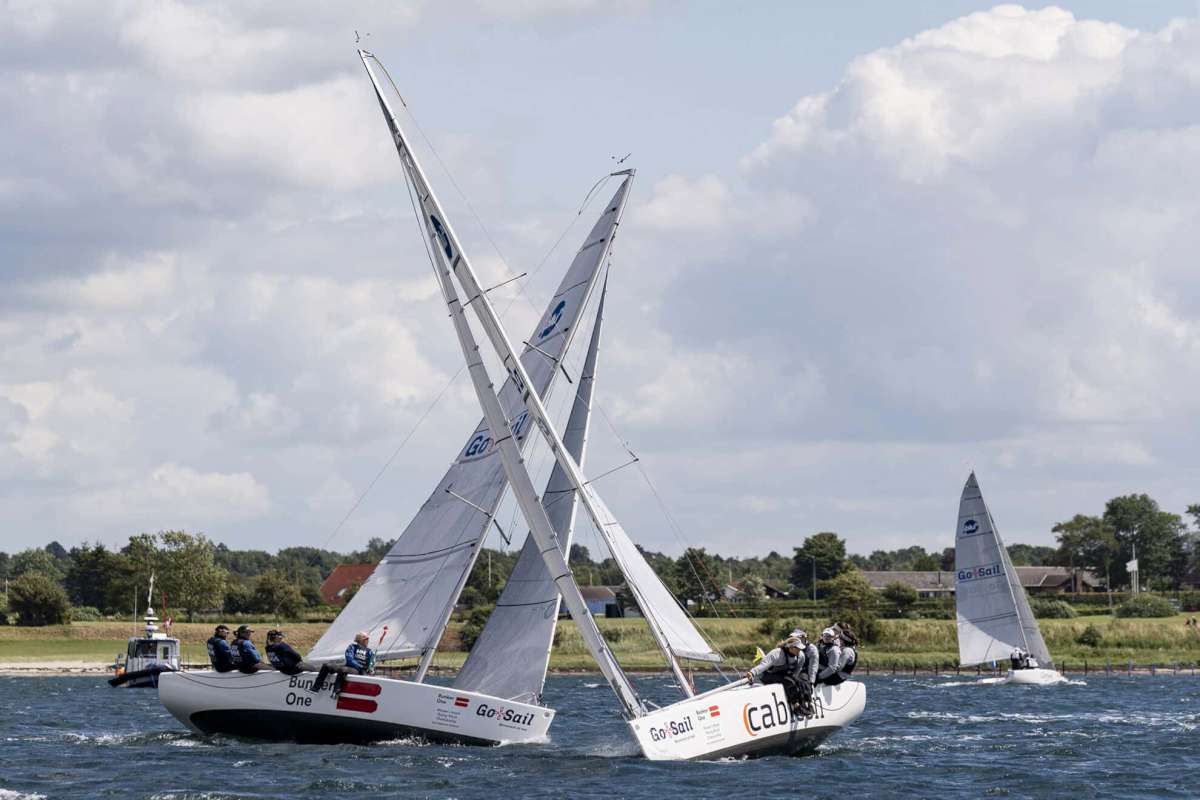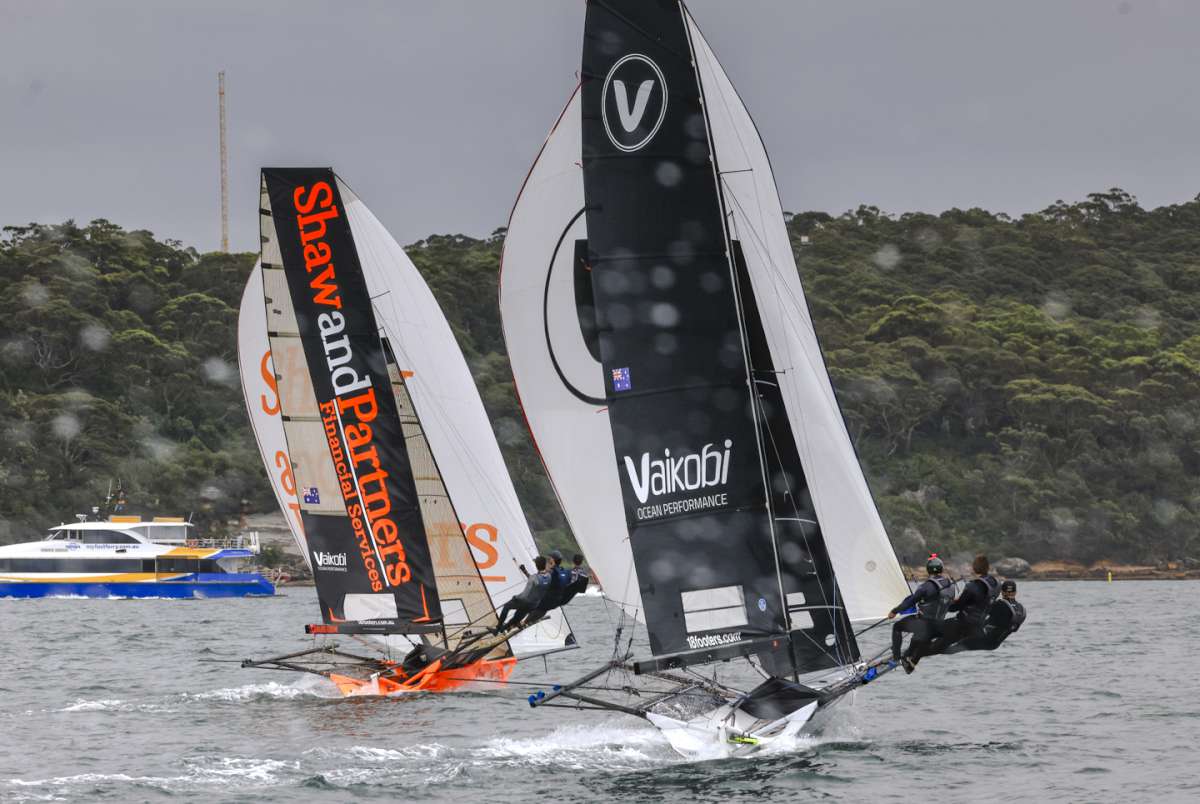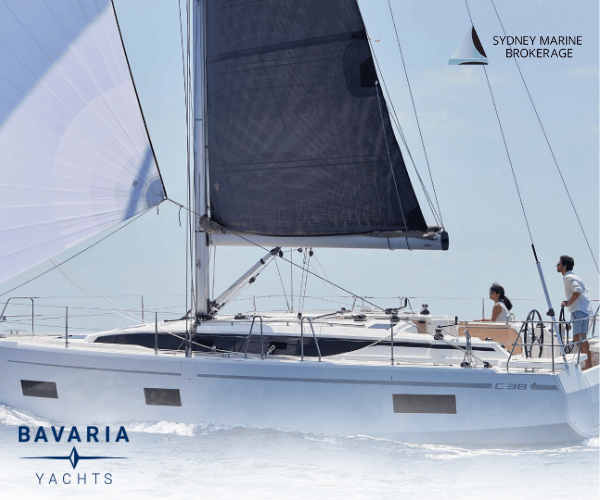As winter approaches, it can be tempting to pack up the sailing gear and go into sailing hibernation until spring. That is what we used to do when we were still working: sailing was for weekends or holidays between October and May.
But the start of our full time cruising life on catamaran Take It Easy in July 2017 taught us a few lessons about sailing in southern waters in winter. So if you want to keep sailing all year long and enjoy some crisp but glorious days on the
water but you do not live in the tropics, or have not got there yet, then follow these ten commandments.
1Thou shalt plan
shorter sails
The days are shorter with fewer daylight hours. It is best to reduce your expectations and plan for shorter sails. It is also really cold before 10am and the temperature plummets after 4pm.
We find we start at first light, but are anchored by 4.30pm at the latest. It is no fun to arrive somewhere in darkness and frigid temperatures.
It is also worth noting that the combination of winter temperatures and wind chill makes for very cold, demanding sailing. It is much harder and tiring work. It therefore makes sense to reduce the length of your passages.
2Thou shalt pay close attention to the weather forecasts
Winter can be a harsh season, one of extremes.
The air is denser in winter and, in the southern climes, the wind packs more punch. The windiest months along the coast of Victoria and Southern NSW according to the Bureau of Meteorology are August and September when almost half of all major storms occur.
So remember to be conservative and flexible when making decisions to come or go and to reef earlier than you normally would. A scrap of jib might be all you need to speed along and NSW westerlies can be very gusty.
At the opposite end of the spectrum you can also get very calm days when you might need to be prepared for early fog and motoring. AIS and a radar are essential in these conditions.
3Thou shalt beware of
open anchorages
Open or ocean anchorages are exactly that: open. They are not secure, well protected, all-weather havens.
On the Victorian coast they can provide shelter from northerlies, whereas in NSW for example it will be shelter from light southerly winds, around a headland. Typically they are subject to some swell.
The golden rules is to use these in only light conditions and anchor well clear of the outer surf line where you will find good holding and smoother waves. Lingering too long in what can be a very pleasant and isolated anchorage may mean you suddenly find yourself on a lee shore, riding short, steep breaking waves driven into the bay by a nor’easter on the east coast, or southerly on the south coast.
We can vouch for the fact that this is not fun and can end up being a costly event that will be etched in your memory for ever!
4Thou shalt wear layer
upon layer
Low temperatures and wind conspire to make sailing in winter a very cold affair. Layering clothes is the key to keeping reasonably comfortable and well insulated.
Wear a sweat-wicking top next to your skin to take any moisture away, then add a thermal, breathable midlayer and a waterproof outer layer.
We found that our kayaking gear, polytherm long pants and long sleeve shirt lined with fleecy material, provide great insulation under our midlayer and offshore bib and brace and jacket. We use the Lavacore gear.
The same layering method can be applied to gloves: inner silk gloves from skiing then thermal gloves or possum fur and merino woollen gloves and an outer shell if it is wet. Get yourself a decent fleecy hat, beanie or balaclava. Plus warm socks and sea boots!
OK, you will look a bit like Tutankhamun wrapped up in all these layers, but you will be a happy little bunny!
5Thou shalt consume lots
of warm drinks
Cups of soup, hot chocolates, teas and coffees keep you warm on the inside, so keep them coming during the day. These also ensure you stay hydrated and thus be less likely to suffer headaches or sea sickness. A flask is a good way to keep hot water at the ready for your drink of choice.
6Thou shalt indulge
in comfort food
Tasty treats, hearty soups, warming stews, preprepared frozos, one pot meals, pasta or rice dishes, are what you want after a brisk sail when you settle in for the night.
Root vegetables, such as sweet potatoes or carrots, apples and citrus fruit, travel well in winter. Cooking also has the advantage of warming up the cabin but bear in mind it is essential to ventilate the galley or else oxygen becomes depleted and burning gas produces deadly carbon monoxide.
We have got into the habit of preparing meals in advance and freezing them in ziplock bags. Then all you have to do is pull a meal out of the freezer in the morning to defrost during the day and, hey presto, tasty dinner without much work!
7Thou shalt enjoy
creature comforts
You do not need a heater to sail in winter but it certainly makes life much more comfortable at anchor in the early morning plus once the sun goes down.
Diesel heaters are popular with any boat using diesel fuel. Gas heaters can work too. We use a Portable Buddy gas heater, but remember ventilation. Other heaters include kerosene and methylated spirit heaters.
We wear down jackets inside the cabin, they are light and very warm. Then there are always blankets and quilts, hot water bottles and furry pets on your lap!
8Thou shalt enjoy
the solitude
One of the delights and advantages of winter cruising in southern waters is that you can enjoy stunning anchorages without hordes of people. The crowds of summer have returned to their home marina, leaving incredible bays, inlets and islands ripe for the picking. Popular coves will be deserted, a rare thing.
You could be forgiven for thinking the coast is yours alone.
9Thou shalt keep an eye
out for whales
One of the wonders of winter and early spring is the whales’ migration; from June to August northward and September to November southward.
Humpback whales are renowned for their cavorting along the coast. Whether breaching, lob tailing or lying on their back or side and slapping their flippers, the displays are spectacular.
The Gold Coast, Hervey Bay and Cape Byron along the east coast, Point Hicks in Victoria, the Sapphire Coast in NSW and Storm Bay in Tasmania are favoured spots for whale watching. There is nothing like seeing whales from your own yacht.
Remember to keep your distance. You are not allowed to approach them to within less than 100 metres. If a whale chooses to swim alongside your yacht, it is its choice and your good luck, unless it decides to breach!
10Thou shalt enjoy
the winter air
The air in winter has a clarity that no other season has. It is winter when the coast takes on a persona few meet.
It is perfect for photography: beautiful, diffuse light that does away with harsh, pesky shadows is your reward for braving the cold. The general lack of colour in winter is also what makes any colour present appear even more admirable. Sunrises and sunsets are particularly glorious and you experience crystal day after crystal day.
To be sure, cruising in the ‘off season’ in the south is not for every cruiser. But be brave, rug up and enjoy the seclusion.
You might discover it is well worth the effort! ≈
